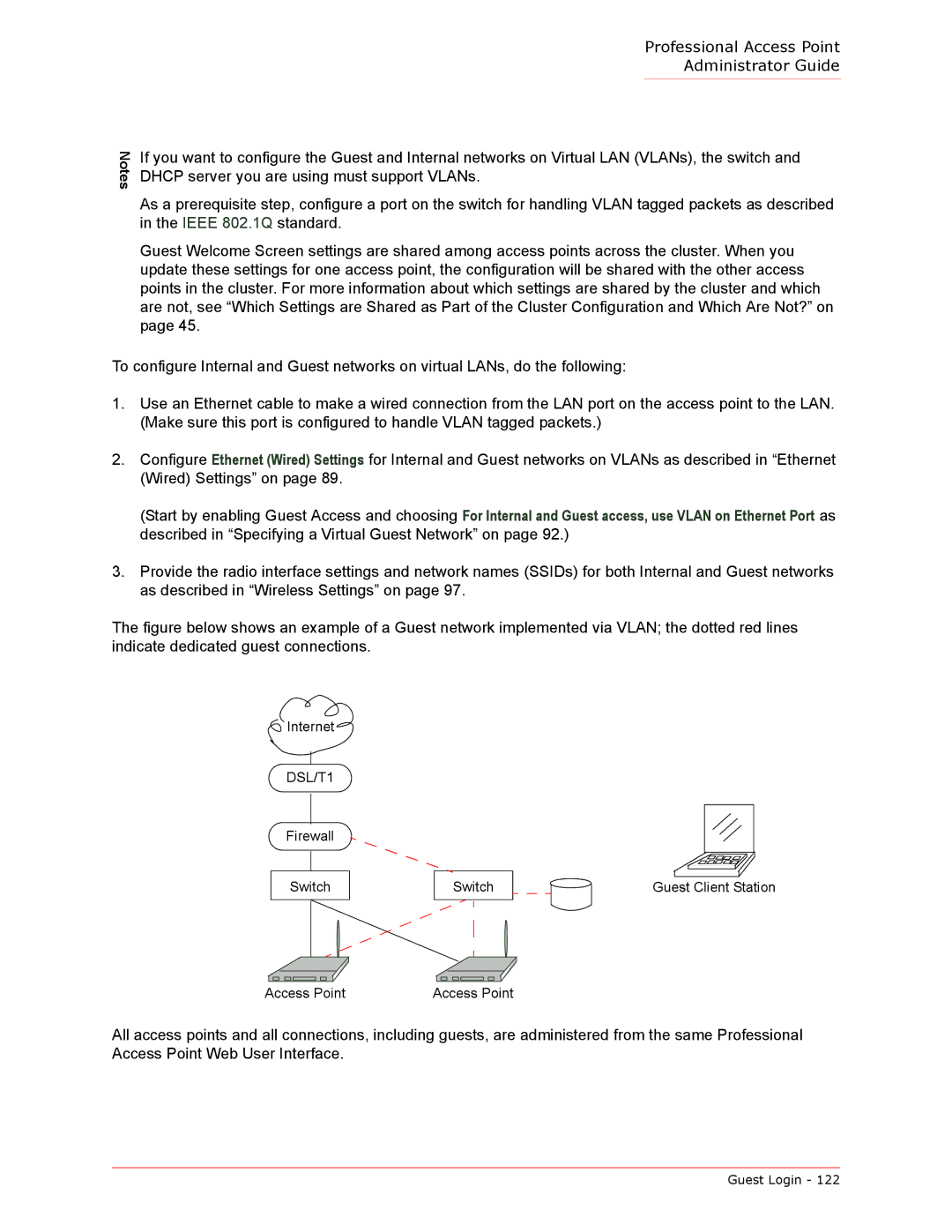
Notes
Professional Access Point
Administrator Guide
If you want to configure the Guest and Internal networks on Virtual LAN (VLANs), the switch and DHCP server you are using must support VLANs.
As a prerequisite step, configure a port on the switch for handling VLAN tagged packets as described in the IEEE 802.1Q standard.
Guest Welcome Screen settings are shared among access points across the cluster. When you update these settings for one access point, the configuration will be shared with the other access points in the cluster. For more information about which settings are shared by the cluster and which are not, see “Which Settings are Shared as Part of the Cluster Configuration and Which Are Not?” on page 45.
To configure Internal and Guest networks on virtual LANs, do the following:
1.Use an Ethernet cable to make a wired connection from the LAN port on the access point to the LAN. (Make sure this port is configured to handle VLAN tagged packets.)
2.Configure Ethernet (Wired) Settings for Internal and Guest networks on VLANs as described in “Ethernet (Wired) Settings” on page 89.
(Start by enabling Guest Access and choosing For Internal and Guest access, use VLAN on Ethernet Port as described in “Specifying a Virtual Guest Network” on page 92.)
3.Provide the radio interface settings and network names (SSIDs) for both Internal and Guest networks as described in “Wireless Settings” on page 97.
The figure below shows an example of a Guest network implemented via VLAN; the dotted red lines indicate dedicated guest connections.
![]() Internet
Internet
DSL/T1
Firewall
Switch
Access Point
Switch
Access Point
Guest Client Station
All access points and all connections, including guests, are administered from the same Professional Access Point Web User Interface.
Guest Login - 122
